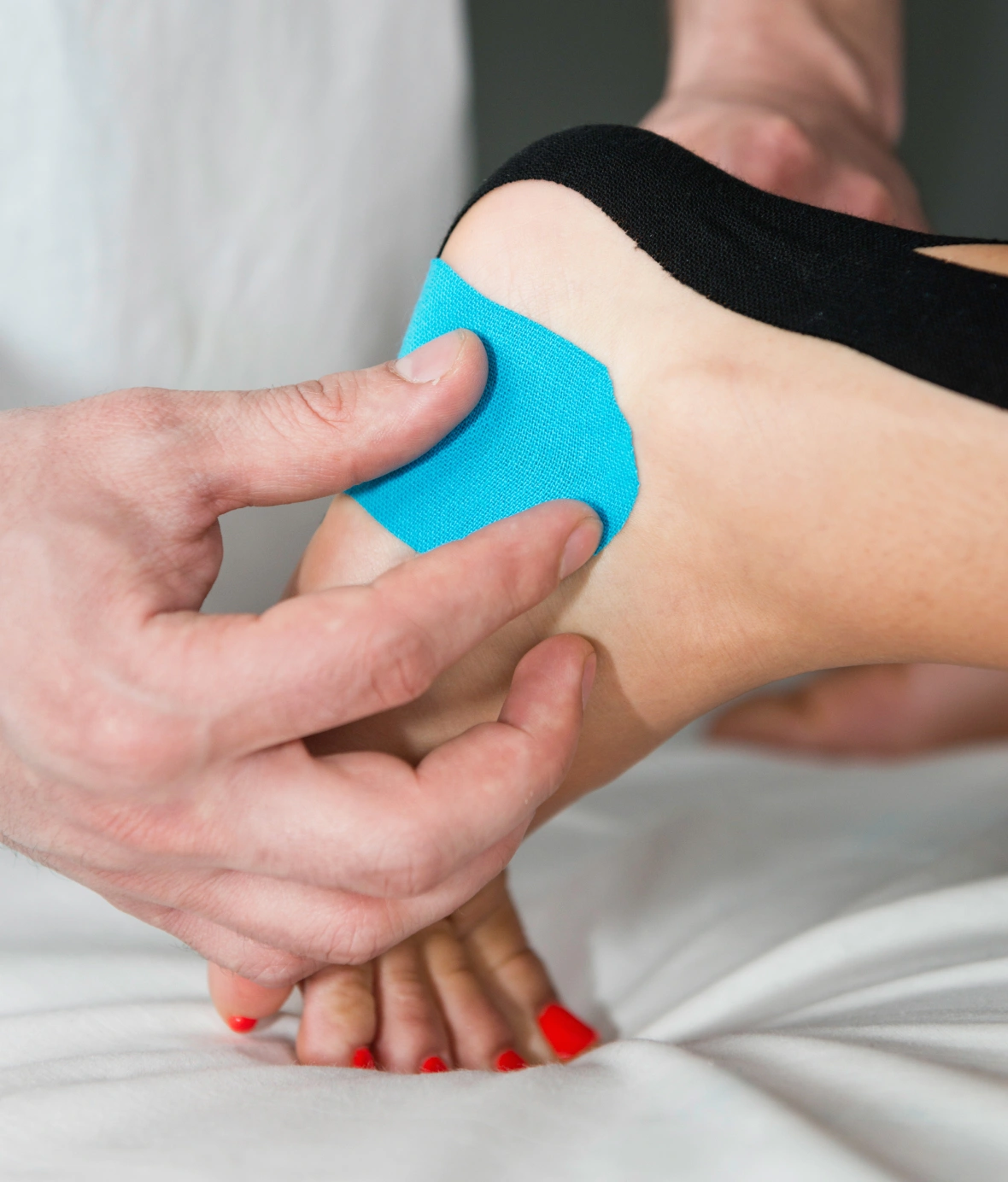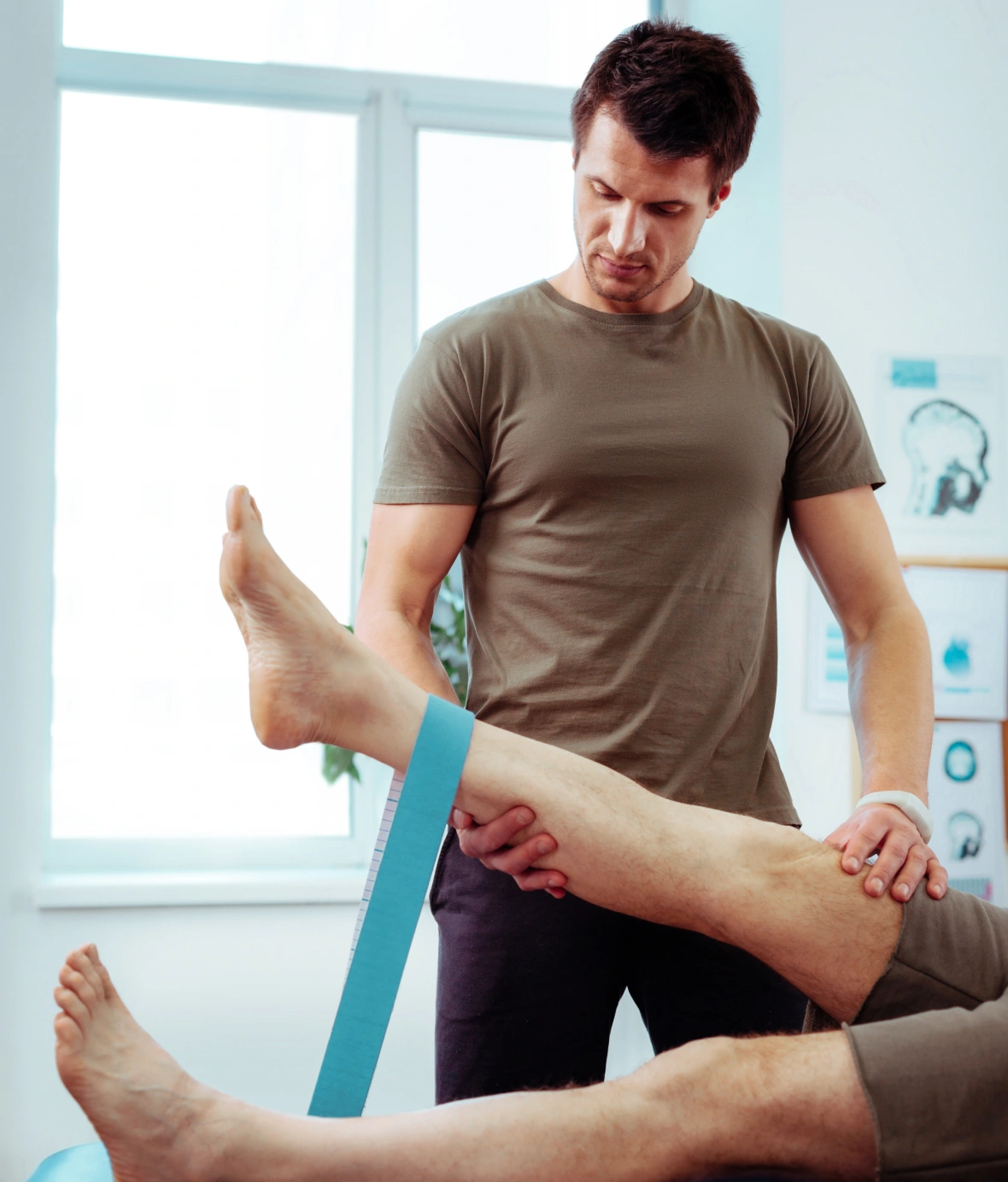Best Plantar Fasciitis Treatment in Gurugram

Plantar fasciitis is a leading cause of heel pain, making everyday activities like walking, standing, or running uncomfortable. It occurs due to inflammation of the plantar fascia, a thick band of connective tissue that supports the arch of your foot. Repetitive strain, poor foot mechanics, and improper footwear can aggravate this condition, leading to sharp heel pain, stiffness, and restricted mobility. If left untreated, plantar fasciitis can worsen over time, making it difficult to perform daily activities and increasing the risk of chronic foot pain and joint issues.
At Painflame, we provide specialized plantar fasciitis treatment in Gurugram, offering chiropractic care, physiotherapy, manual therapy, and rehabilitation exercises to relieve pain and restore normal foot function. Our holistic, non-surgical approach helps reduce inflammation, correct foot posture, and strengthen the arch and supporting muscles to prevent recurrence.
We treat a wide range of conditions, including heel spurs, Achilles tendonitis, overuse injuries, and flat feet-related pain, using evidence-based, drug-free techniques. Instead of relying on painkillers, our personalized treatment plans target the root cause, ensuring long-term relief and improved mobility.
What Causes Plantar Fasciitis?
Overuse and Repetitive Strain
Excessive walking, running, or standing on hard surfaces puts repetitive strain on the plantar fascia, leading to inflammation, microtears, and chronic heel pain.
Poor Footwear and Arch Support
Wearing flat shoes, high heels, or unsupportive footwear can alter foot mechanics, increasing stress on the plantar fascia and causing pain and discomfort.
Tight Calf Muscles and Achilles Tendon
Limited ankle mobility due to tight calf muscles or a shortened Achilles tendon increases tension on the plantar fascia, making it prone to irritation and injury.
Foot Structure and Biomechanical Issues
Flat feet, high arches, or improper walking patterns can place excessive strain on the foot, leading to poor weight distribution, misalignment, and plantar fasciitis pain.
Signs You Need Plantar Fasciitis Treatment
Heel Pain in the Morning
Experiencing sharp heel pain with your first steps in the morning is a key sign of plantar fasciitis. If pain persists throughout the day, professional treatment is essential.
Pain That Worsens with Activity
Heel pain that worsens after walking, standing, or exercise indicates ongoing plantar fascia strain. Ignoring it may lead to chronic inflammation and restricted mobility.
Stiffness and Arch Discomfort
Tightness in the arch or difficulty flexing the foot may signal plantar fascia inflammation. Early physiotherapy, stretching, and rehabilitation can prevent worsening symptoms.
Swelling or Tenderness in the Heel
Swelling, redness, or heel tenderness may indicate stress on the plantar fascia. Without treatment, inflammation can worsen, affecting foot function and daily mobility.


Non-Surgical Solutions for Plantar Fasciitis Relief
Physiotherapy & Strength Training
Physiotherapy enhances foot flexibility, muscle strength, and joint stability through targeted exercises and mobility drills. Strengthening the arch and calf muscles reduces strain on the plantar fascia, improves balance, and supports natural healing, preventing further pain and injuries.
Chiropractic Care & Foot Alignment
Chiropractic care helps correct foot misalignment, relieve tension, and improve movement efficiency. Adjustments restore proper weight distribution, reducing pressure on the plantar fascia. By enhancing posture and walking mechanics, chiropractic treatment helps prevent recurring heel pain and foot dysfunction.
Manual Therapy & Soft Tissue Release
Manual therapy techniques like myofascial release, deep tissue massage, and trigger point therapy help relieve muscle tightness, inflammation, and stiffness in the foot. These therapies enhance blood circulation, reduce fascial tension, and promote healing, restoring mobility and pain-free movement.
Strengthening & Preventing Future Foot Issues
Keeping your feet strong and flexible is essential for preventing plantar fasciitis and recurring heel pain. Weak foot muscles, poor posture, and improper movement patterns increase strain on the plantar fascia, leading to chronic pain, arch instability, and mobility issues. Strengthening exercises and corrective techniques help maintain foot health.
Strengthening Foot and Arch Muscles
Toe curls, calf raises, and resistance band exercises strengthen foot muscles, enhance arch support, and reduce plantar fascia strain, improving stability and preventing foot pain recurrence.
Enhancing Foot Mobility
Stretching the calves, Achilles tendon, and plantar fascia boosts flexibility, reduces stiffness, and prevents heel tension, ensuring better movement and lower risk of plantar fasciitis.
Correcting Walking Patterns and Footwear
Wearing supportive footwear, using orthotic insoles, and improving gait mechanics help reduce plantar fascia strain, improve foot alignment, and prevent chronic heel pain and reinjury.

Frequently Asked Questions
What are the common causes of plantar fasciitis?
Plantar fasciitis is caused by overuse, improper footwear, tight calf muscles, high-impact activities, and foot arch abnormalities, leading to inflammation and pain.
When should I see a specialist for plantar fasciitis?
If you experience persistent heel pain, morning stiffness, swelling, or difficulty walking, consult a plantar fasciitis specialist in Gurugram for early treatment.
What are the best non-surgical treatments for plantar fasciitis?
Physiotherapy, chiropractic care, manual therapy, foot strengthening, and orthotics can help relieve pain and restore normal foot function without surgery.
Can plantar fasciitis be treated without medication?
Yes, non-invasive methods like stretching, myofascial release, cold therapy, and posture correction can effectively manage pain and promote healing without painkillers.
How can I prevent plantar fasciitis from returning?
Maintain strong foot muscles, wear proper footwear, avoid prolonged standing, stretch regularly, and use custom orthotics to reduce stress on the plantar fascia.

